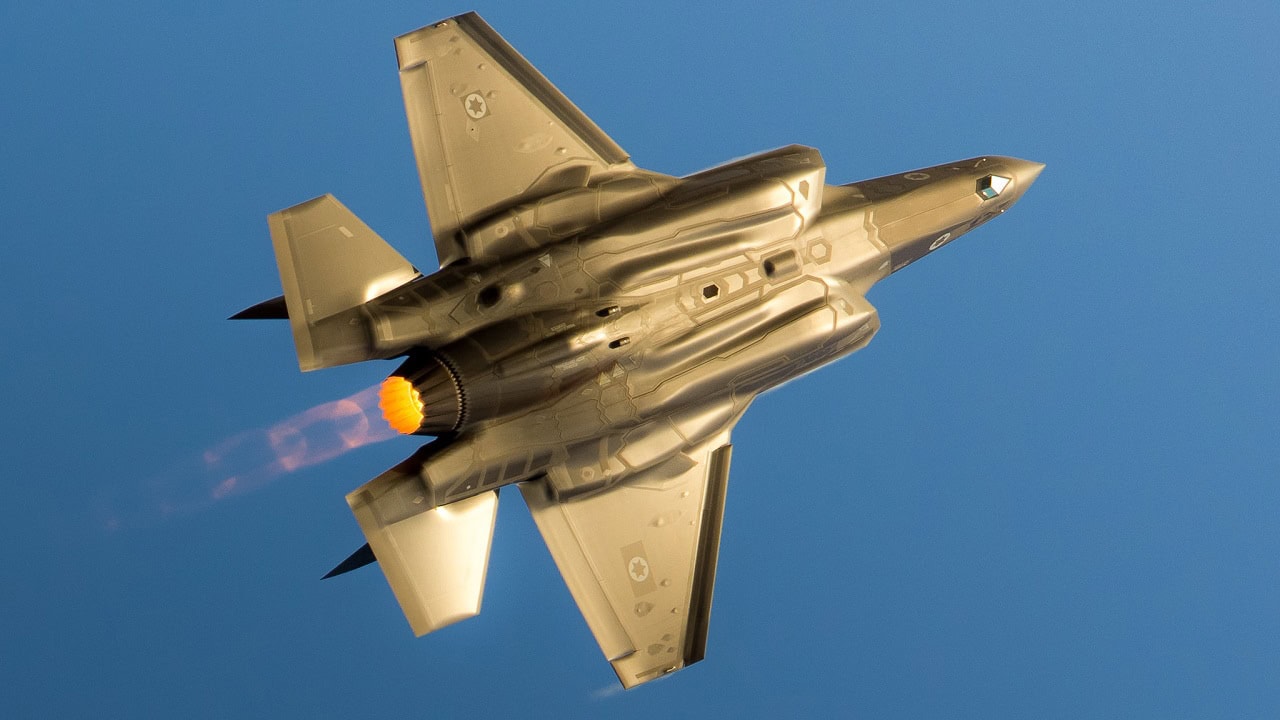Last month, two squadrons of United States Air Force F-15C/D Eagle fighters stationed at Kadena Air Base in Japan were withdrawn, as part of a phased modernization plan. However, it would be wrong to think that the old warbird’s days are numbered.
(Subscribe to Our YouTube Channel Here. Check out More 19FortyFive Videos Here)
Even as the aging Eagles were flying back to the United States, the U.S. Air Force Central Command (AFCENT) deployed six F-15 Strike Eagles to an Israeli Air Force base in Southern Israel, as part of a military tactic to constantly disperse its aircraft around the globe.
According to the IAF, during the deployment at Nevatim Airbase, the six F-15s will conduct joint exercises with Israel’s fleet of Lockheed Martin F-35I “Adir” fifth-generation fighters and a squadron of intelligence-gathering Gulfstream G550 planes. The drills, which are set to take place this week, are meant to simulate strikes deep into enemy territory, The Times of Israel reported.
The deployment of the F-15 Strike Eagles by AFCENT is part of a doctrine described as “agile combat employment” (ACE), whereby the aircraft are dispersed at forward operating positions in allied countries around the globe – rather than at the U.S. Air Force’s traditional main overseas bases. ACE shifts operations from centralized physical infrastructures to a network of smaller, dispersed locations or cluster bases, while the doctrine seeks to both deprive enemy forces of opportunities to damage the U.S. Air Force, and to enable it to more quickly respond to events.
Increased Joint Operations
The deployment of the U.S. Air Force F-15 Strike Eagles follows a joint exercise with the IAF that was carried out over the Eastern Mediterranean Sea region on November 29 and 30, 2022. Ninth Air Force (U.S. Air Forces Central) F-15E Strike Eagles, F-16 Fighting Falcons, and KC-10 Extenders operated with F-35I Adir – the Israeli-specific variant of the fifth-generation fighter.
“CENTCOM routinely demonstrates the ability to rapidly insert combat airpower into operations and exercises with our partners, and our ability to do the same across all domains decisively is a powerful deterrent,” its commander, U.S. Army Gen. Michael “Erik” Kurilla said via a statement last month.
It also marked what is anticipated to be the first of several deployments designed to improve bilateral aerial capability between the U.S. and Israeli air forces since the Joint Declaration on the U.S.-Israel Strategic Partnership was adopted in Jerusalem last year.
Lt. Gen. Alexus Grynkewich, AFCENT commander, also noted the strong partnership between AFCENT and the Israeli air force.
“This exercise showcases our commitment to partnering with Israel to counter threats to regional security and stability,” Grynkewich said. “The Israeli air force provides tremendous deterrent capability and capacity throughout the Middle East region, and we’ll continue to build opportunities to improve our integrated defenses and ability to project combined airpower.”
Israel has been pushing for the United States to prepare military contingency plans in order to prevent Iran from obtaining a nuclear weapon.
MORE: Putin Will Flip – Ukraine Is Getting Patriot Missiles
MORE: Could India and China Be Headed for War?
Author Experience and Expertise: A Senior Editor for 19FortyFive, Peter Suciu is a Michigan-based writer. He has contributed to more than four dozen magazines, newspapers, and websites with over 3,200 published pieces over a twenty-year career in journalism. He regularly writes about military hardware, firearms history, cybersecurity, politics, and international affairs. Peter is also a Contributing Writer for Forbes and Clearance Jobs. You can follow him on Twitter: @PeterSuciu.

